Philippine seafood is a culinary treasure trove, showcasing the country's rich maritime bounty and vibrant coastal culture. From the pristine waters of the Philippine archipelago emerge an array of fresh and flavorful seafood delights. Adobong Pusit, or squid adobo, features tender squid simmered in a tangy soy-vinegar sauce. Sinigang na Hipon, a sour shrimp soup, tantalizes the palate with its tangy tamarind broth and fresh shrimp. Grilled Bangus, or milkfish, is a beloved delicacy marinated in vinegar and spices before being grilled to perfection. These dishes highlight the Philippines' love affair with seafood, offering a taste of its coastal abundance and culinary tradition.
Kinilaw
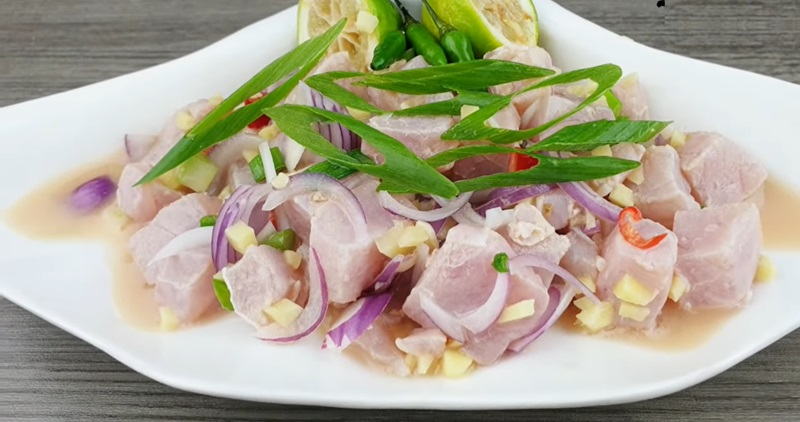
Kinilaw is a popular seafood dish in the Philippines that is widely enjoyed for its vibrant flavors and fresh ingredients. It is a form of ceviche, where raw seafood is marinated in a mixture of vinegar, citrus juice, and spices. The dish is typically made with various types of seafood such as fish, shrimp, squid, or even sea urchins. The marinade for kinilaw is the key to its distinctive taste. It usually consists of vinegar, calamansi juice (a local citrus fruit), onions, ginger, and chili peppers. The acidic marinade "cooks" the raw seafood, resulting in a tangy, refreshing flavor. To prepare kinilaw, the seafood is cleaned thoroughly and sliced into bite-sized pieces. It is then mixed with the marinade and allowed to marinate for a few minutes to several hours, depending on personal preference. The dish is often garnished with fresh herbs like cilantro or spring onions, which add a burst of freshness. Kinilaw is commonly served as an appetizer or pulutan (finger food) during social gatherings or as a main dish.
Burong Isda

Burong Isda, also known as fermented fish, is a traditional Filipino dish that showcases the rich flavors of seafood. This dish is made by fermenting fish, typically milkfish or tilapia, with rice and salt. The fermentation process gives the fish a tangy and slightly sour taste, creating a unique and appetizing flavor profile. To prepare burong isda, the fish is first cleaned and gutted. It is then mixed with cooked rice and salt, and left to ferment for a few days. The fermentation process allows the rice to break down and release enzymes that transform the fish into a flavorful and slightly acidic dish. Burong isda can be enjoyed in various ways. It can be eaten as a condiment or topping for rice, paired with vegetables or other seafood dishes, or even used as a filling for spring rolls or empanadas.
Taba ng talangka

Taba ng talangka is a popular seafood delicacy in the Philippines known for its rich and savory flavor. It is made from the fat or roe of small crabs called talangka, which are abundant in the coastal areas of the country. The dish is typically prepared by sautéing the crab fat with garlic, onions, and spices until it becomes thick and creamy. The distinct taste of taba ng talangka comes from the natural sweetness and brininess of the crab fat, which is enhanced by the aromatic ingredients used in cooking. It is often enjoyed as a condiment or sauce for various dishes, such as grilled seafood, steamed vegetables, or even plain steamed rice. The creamy texture and intense flavor of taba ng talangka makes it a sought-after ingredient in Filipino cuisine.
Pinangat na isda

Pinangat na isda, a cherished Filipino dish from Southern Luzon, showcases a harmonious blend of flavors and textures. In this culinary masterpiece, fish and tomatoes are gently stewed in a delectable broth, enriched with the tanginess of fruits like calamansi, bilimbi, tamarind, or santol. The result is a savory symphony, where the sweetness of fish meets the acidity of tropical fruits, creating a tantalizing medley.
Linarang
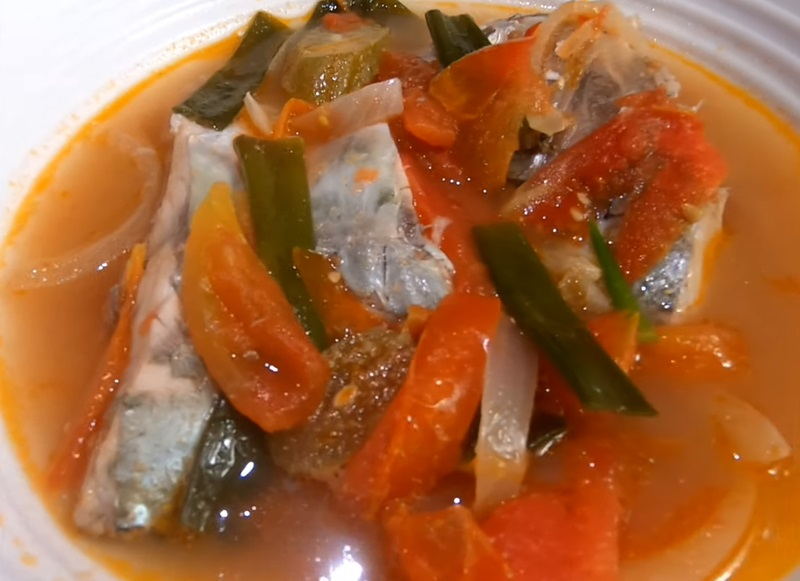
Linarang, also known as larang or nilarang, is a Filipino fish stew originating from the Central Visayas islands. This dish is crafted by combining fish with a zesty and tangy coconut milk-based broth, featuring garlic, red onions, tomatoes, fermented black beans (tausi), chilis, and sour fruits. The cooking process involves sautéing the fish with garlic, red onions, and tomatoes before simmering it in a flavorful broth enriched with fermented black beans (tausi), chilis, and a souring agent. Common souring agents include bilimbi (iba), unripe mangoes, or tamarind (sambag), though any sour fruit can be used to achieve the desired acidity.
Sarsiado
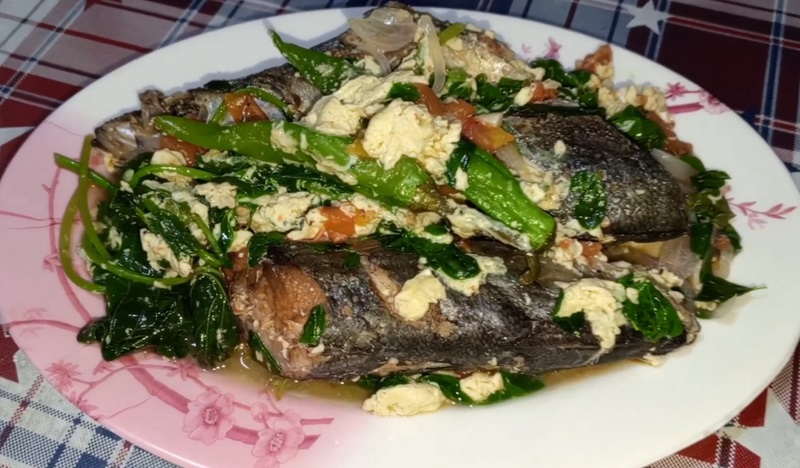
Sarsiado is a delectable seafood dish that hails from the Philippines. The word "sarsiado" translates to "sauce," and this dish is all about the rich and flavorful sauce that accompanies the seafood. The main ingredients of Sarsiado Dish typically include fresh fish, such as tilapia or bangus (milkfish), along with tomatoes, onions, garlic, and beaten eggs. The fish is first sautéed until golden brown and set aside. In the same pan, a savory sauce is created by combining tomatoes, onions, and garlic, which are cooked until soft and aromatic. The beaten eggs are then added, creating a luscious and creamy texture to the sauce. Once the sauce is ready, the fish is placed back into the pan, allowing it to simmer and absorb the flavors of the sauce. The result is a mouthwatering combination of tender fish and a tangy tomato-based sauce, enhanced by the richness of the eggs.
Ginataang Isda
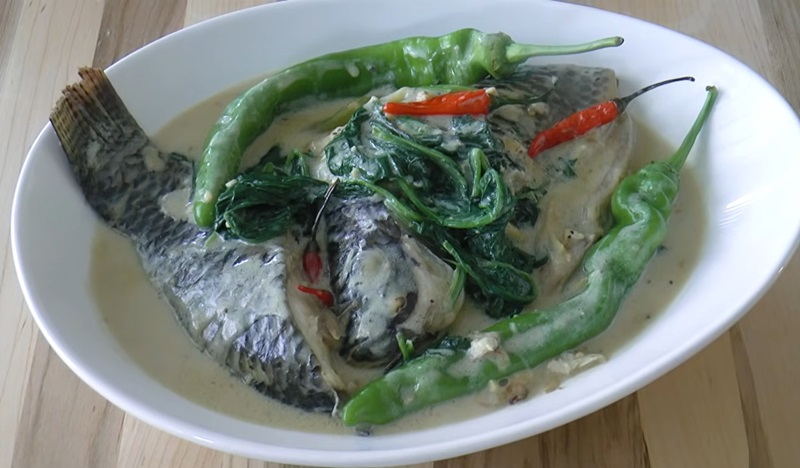
Ginataang isda, also known as fish cooked in coconut milk, is a popular seafood dish in the Philippines. The dish is characterized by its rich and creamy sauce made from coconut milk, combined with various herbs and spices that give it a distinct and flavorful taste. To prepare ginataang isda, fresh fish, such as tilapia or bangus (milkfish), is usually used. The fish is first marinated in a mixture of vinegar, garlic, and salt to remove any unwanted smell. It is then simmered in a saucepan with coconut milk, ginger, onion, and chili peppers. The combination of these ingredients creates a delicious and fragrant broth that infuses into the fish. The dish is often garnished with vegetables like spinach or malunggay leaves, which add a vibrant green color and an extra layer of flavor. Some variations of ginataang isda also include ingredients like green papaya, eggplant, or even shrimp. Ginataang isda is typically served with steamed rice, allowing the flavors of the coconut milk and spices to complement the fish. Its creamy and savory taste, along with the tender and succulent fish, make it a delightful and comforting seafood dish enjoyed by many Filipinos.
Nilasing na hipon
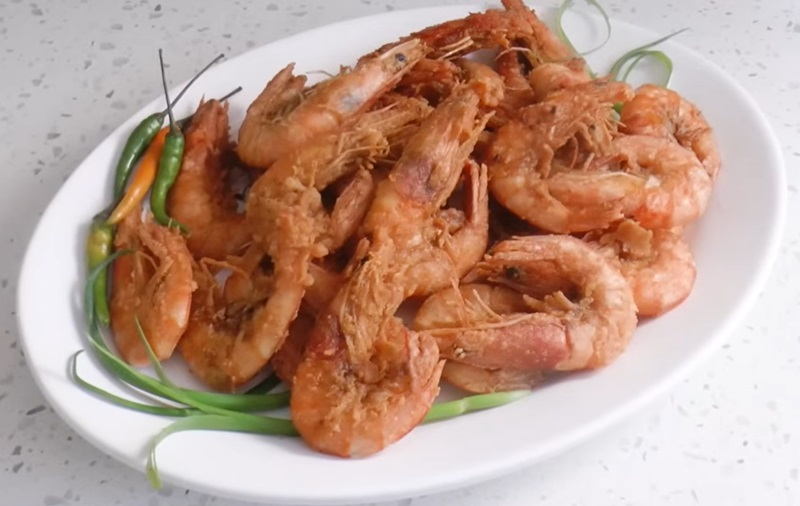
Nilasing na hipon is a popular Filipino seafood dish that showcases the unique flavors and cooking techniques of the Philippines. This dish consists of large shrimps marinated in a mixture of alcoholic beverages, typically beer or wine, and then deep-fried to perfection. The name "nilasing na hipon" literally translates to "drunken shrimp," which perfectly describes the way the shrimps are infused with the flavors of the alcohol during the marinating process. The combination of the marinade and the deep-frying gives the dish a deliciously crispy exterior, while the shrimps remain juicy and tender on the inside. Nilasing na hipon is often served as an appetizer or a main dish, and it pairs well with a variety of dipping sauces such as vinegar or soy sauce with calamansi. The dish is loved for its crunchy texture, succulent shrimp meat, and the rich flavors brought by the marinade.
Sinanglay
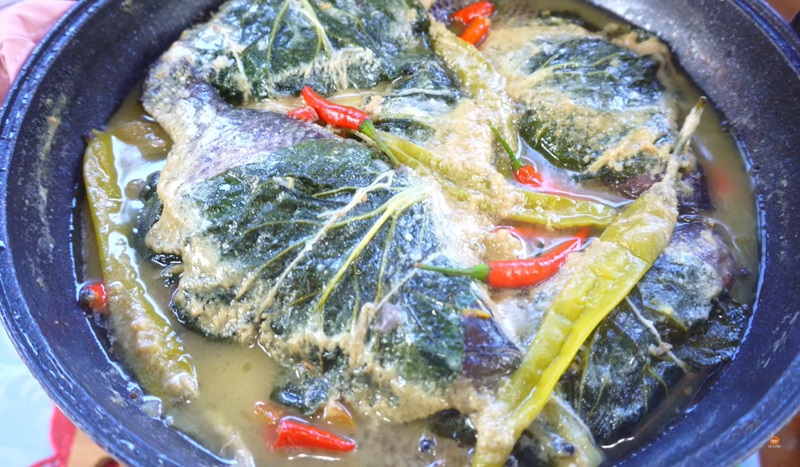
Sinanglay is a traditional Filipino seafood dish that originates from the provinces of Bicol and Quezon. It is a delectable combination of fresh tilapia fish, wrapped in pechay or taro leaves, and cooked in a rich and flavorful coconut milk-based sauce. To prepare Sinanglay, the tilapia fish is cleaned and seasoned with salt and pepper before being stuffed with a mixture of tomatoes, onions, garlic, and ginger. The fish is then carefully wrapped in pechay leaves, which adds a unique and earthy flavor to the dish. The stuffed fish parcels are then simmered in a sauce made from coconut milk, fish sauce, and a medley of spices such as turmeric and chili peppers. The result is a mouthwatering dish that showcases the natural flavors of the tilapia fish, enhanced by the creamy and aromatic coconut milk sauce.
Tinapayan

Tinapayan, a Filipino dish originating from the Maguindanao people, consists of tapay (fermented cooked rice) and dried fish. Similar to the more widespread northern dish burong isda, tinapayan distinguishes itself by drying the fish first. The preparation, though time-consuming, yields a dish with extended preservation. The fish (usually snakehead or catfish) undergoes a meticulous process, starting with sun-drying for three days. It is then covered in tapay (cooked rice fermented overnight in banana leaves) with ginger, chilis, and spices, fermenting for an additional week. After fermentation, the fish is shredded, deep-fried, and typically enjoyed with white rice.
Ginataang Hipon
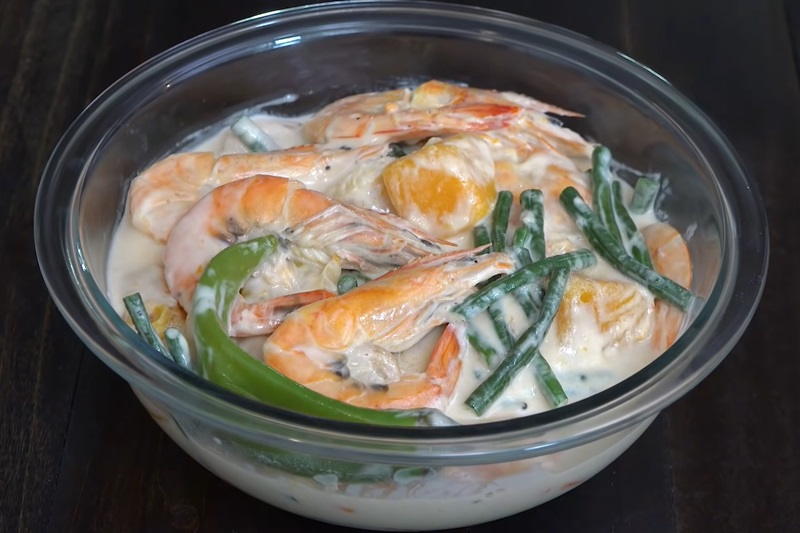
Ginataang Hipon, also known as shrimp in coconut milk, is a popular seafood dish in the Philippines. This delicious and creamy dish is made by cooking fresh shrimp in a rich and flavorful coconut milk sauce, infused with various aromatic herbs and spices. To prepare ginataang hipon, the shrimp is first marinated in a mixture of garlic, ginger, and calamansi juice, which adds a tangy and citrusy flavor to the dish. The marinated shrimp is then sautéed in a pan with onions, garlic, and tomatoes until they turn pink and tender. Next, coconut milk is added to the pan, along with some fish sauce or salt for seasoning. The dish is simmered until the coconut milk thickens and absorbs the flavors of the shrimp and spices.
Fish Longganisa

Fish Longganisa is a seafood version of the well-known longganisa, which is a Filipino sausage. Fish longganisa is made by combining ground fish meat with various seasonings and spices such as garlic, vinegar, soy sauce, and black pepper. The mixture is then shaped into small sausage-like links and pan-fried until golden brown. What sets fish longganisa apart is its light and delicate taste, with a hint of tanginess from the vinegar and soy sauce. The texture is also slightly different compared to regular longganisa, as the fish meat gives it a tender and flaky consistency.
Sarsa na uyang
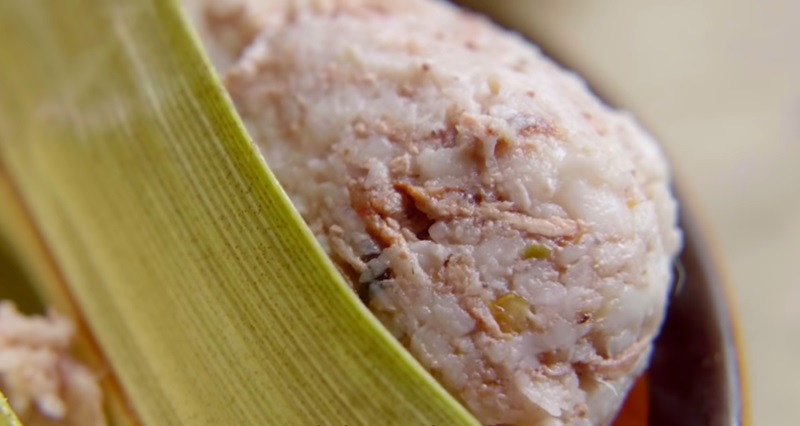
Sarsa na uyang, or simply sarsa, is a Filipino dish made from pounded freshwater shrimp, shredded coconut, chilis, ginger, peppercorns and other spices wrapped in coconut leaves and boiled in coconut milk. It is eaten paired with plain rice.
Calamares
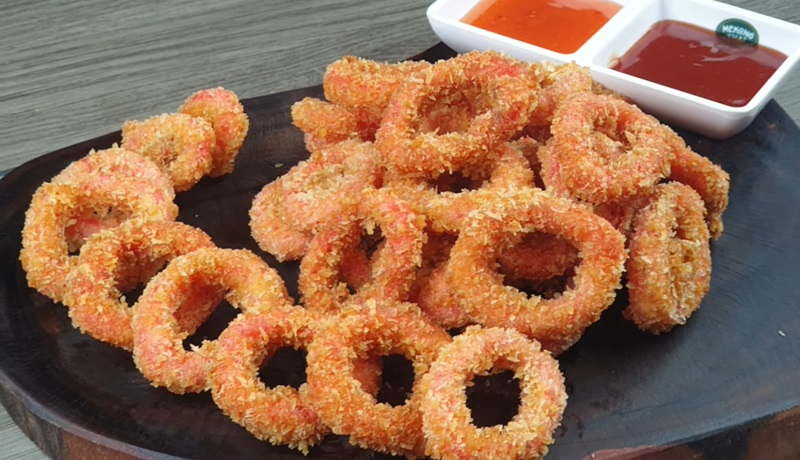
Calamares is a popular seafood dish in the Philippines that showcases the country's love for flavorsome and crispy fried squid. This dish is made by marinating fresh squid rings in a mixture of soy sauce, calamansi juice, garlic, and other seasonings. The squid is then coated in a light batter made from flour and cornstarch before being deep-fried until golden brown. The result is a delightful combination of tender squid with a crunchy and flavorful exterior. Calamares is often served as an appetizer or as part of a main course, accompanied by a dipping sauce such as garlic mayonnaise or vinegar with chili peppers.
Lumlom
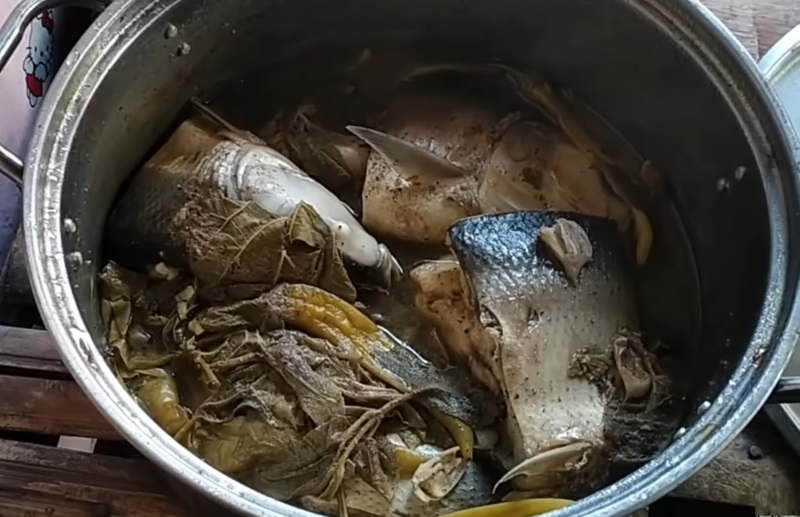
Lumlom, a pre-colonial Filipino fermented fish delicacy hailing from Bulacan, Philippines, stands out for its distinctive preparation method. Typically using milkfish or tilapia, the fish is buried in mud for a day or two, initiating a subtle fermentation process. Following fermentation, it undergoes cleaning and is cooked as paksiw sa tuba, incorporating spices, nipa vinegar, and occasionally coconut cream.
Pininyahang Hipon
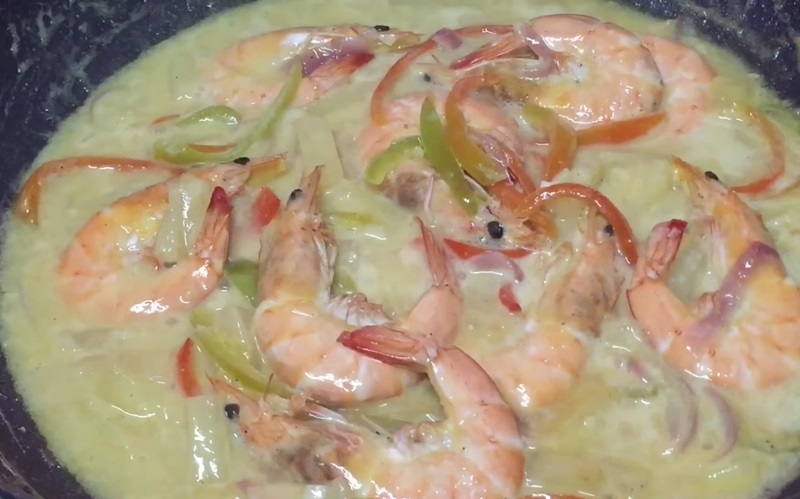
Pininyahang Hipon, also known as pineapple shrimp, is a popular seafood dish in the Philippines. This delightful dish combines the sweetness of pineapple with the succulent taste of shrimp, creating a mouthwatering flavor explosion. To make pininyahang hipon, fresh shrimps are marinated in a mixture of garlic, onions, and soy sauce, then cooked in a creamy sauce made from coconut milk and crushed pineapples. The addition of bell peppers, carrots, and peas not only adds color but also enhances the overall taste and texture of the dish. The creamy coconut milk sauce perfectly complements the succulent shrimp, creating a rich and savory flavor. The sweetness from the pineapples adds a refreshing twist, balancing out the richness of the sauce.







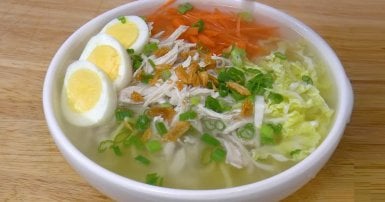

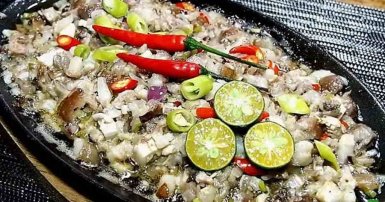



-1709813013.jpg)


